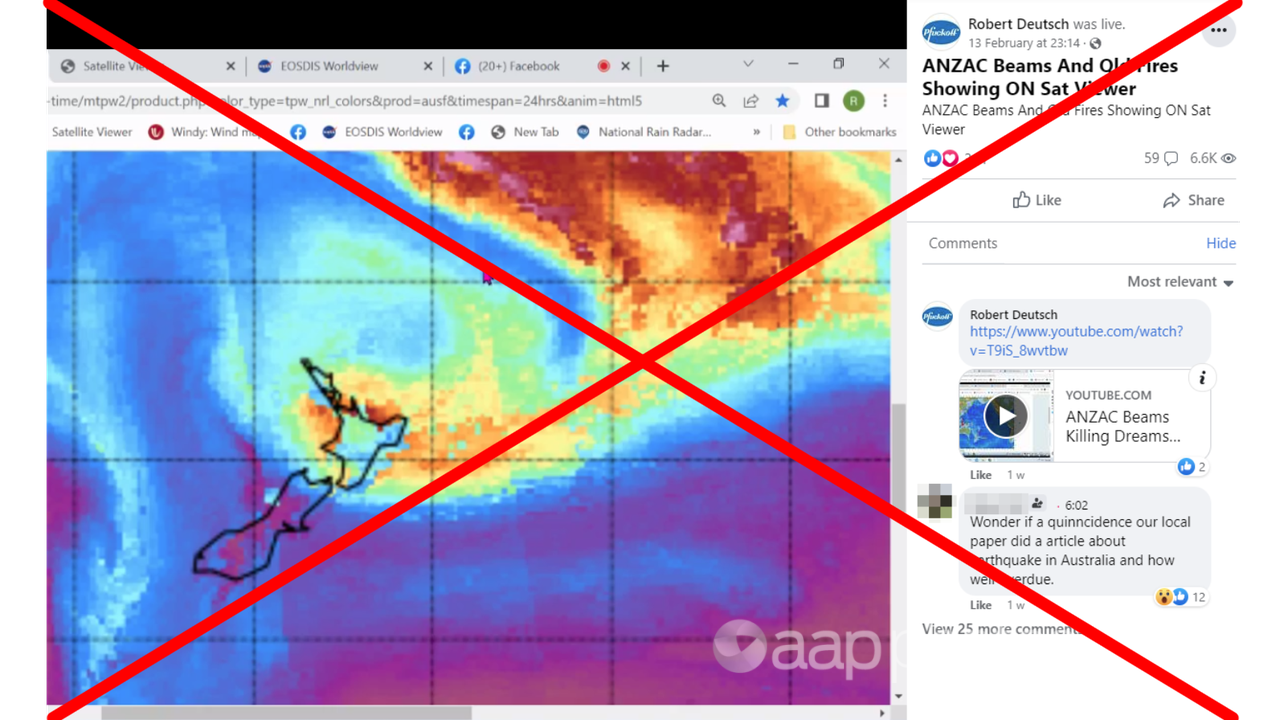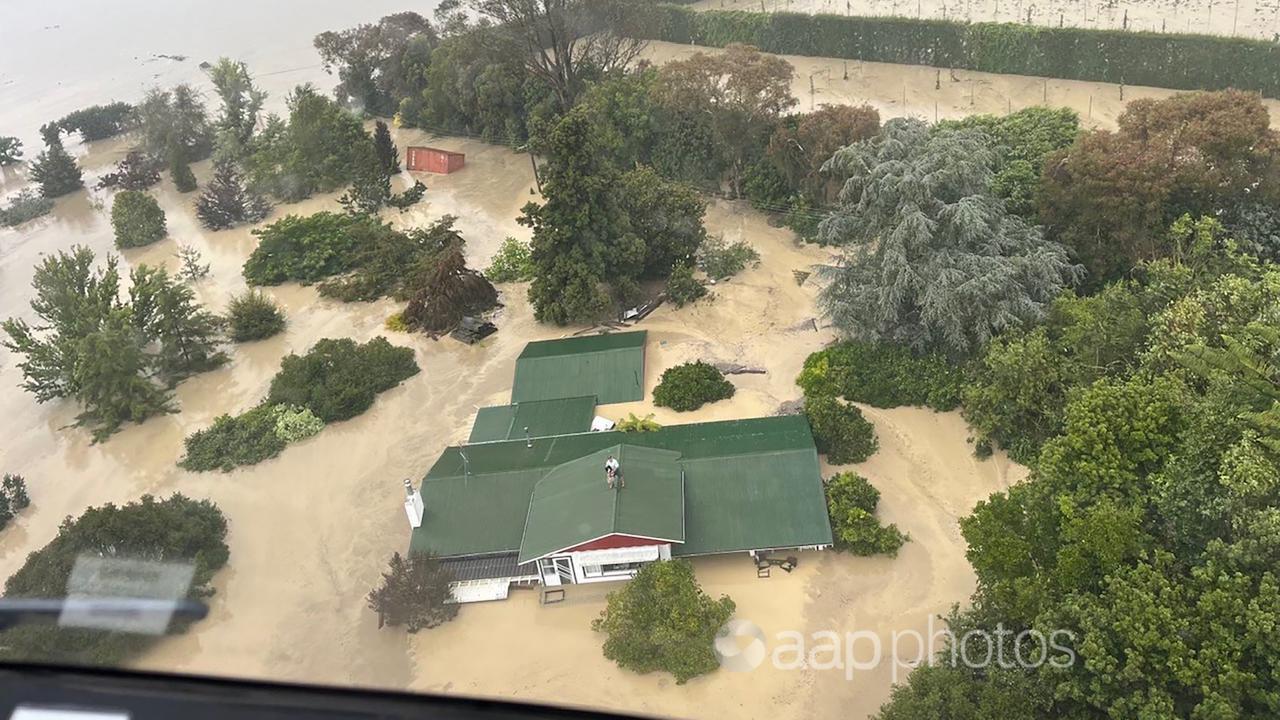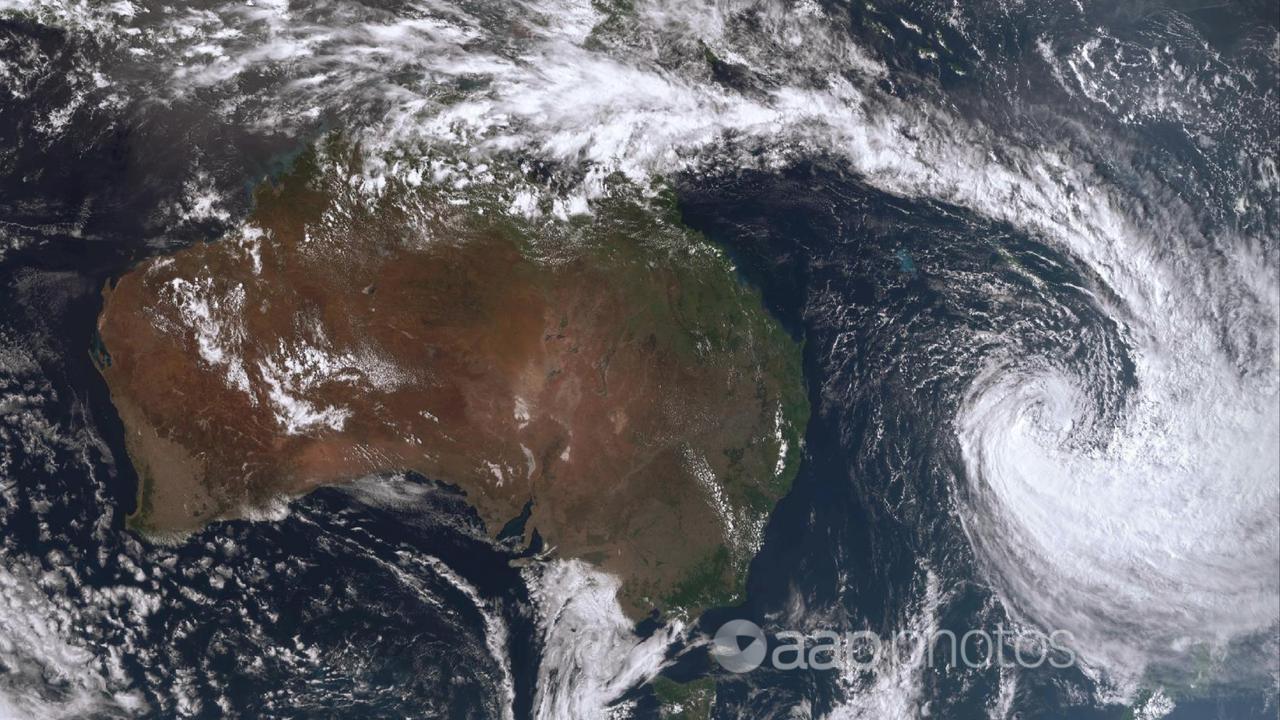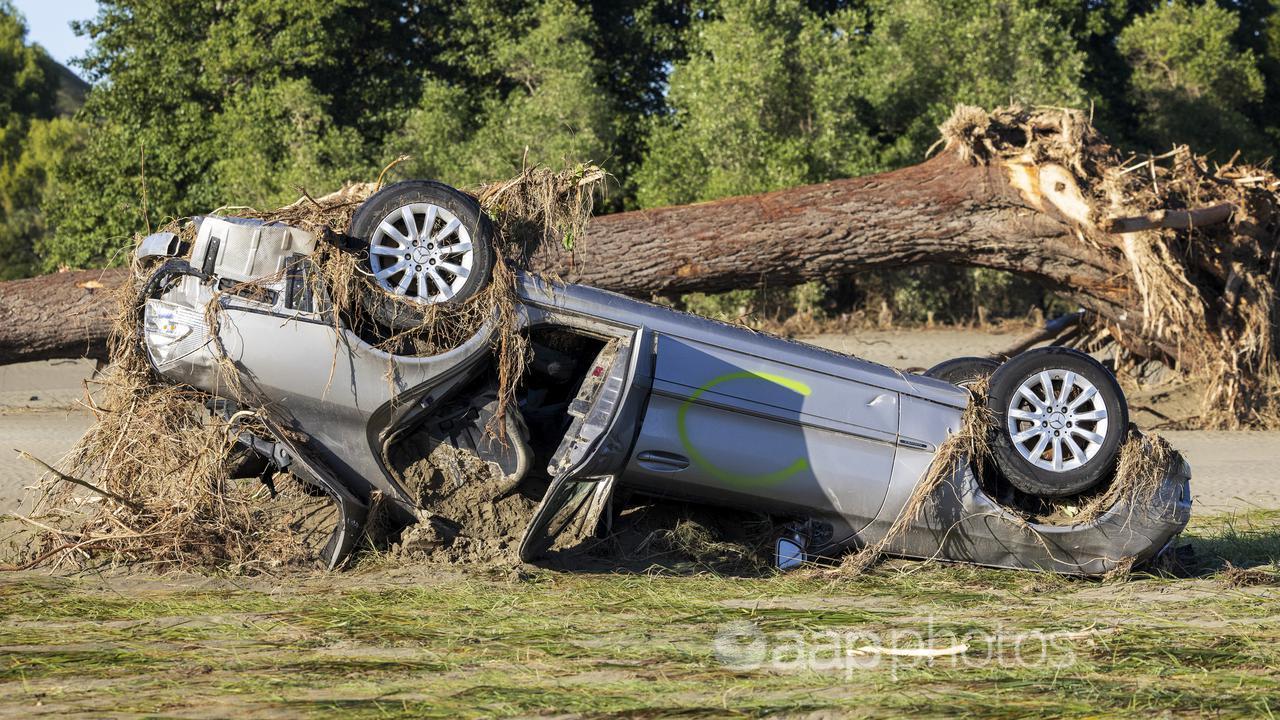Social media users claim a scientific radar facility at the base of New Zealand’s South Island was influential in creating Cyclone Gabrielle.
A Facebook user who regularly posts about weather modification shared a video (screenshot here) on February 13, 2023, claiming the TIGER-Unwin radar was responsible for the cyclone moving across the North Island.
Problem is, the radar has been inoperable for three years and wasn’t working when Gabrielle lashed NZ between February 12 and 14.
In the video, the user moves a cursor around a total precipitable water map, showing how much water is in the atmosphere, zooming in on New Zealand.
“Look at the pulse coming off the coast here … that’s a huge blast, look who’s doing it – right at the Fjordlands, it’s right at the TIGER radar down here,” the user says, pointing to the bottom of the South Island (video mark 2mins 20sec).
“TIGER is blasting this storm right through here. That’s big. This puts huge, huge quake risk and I’ll blame those devices.”

A February 15 blog article shared by a NZ “alternative media” page on Facebook similarly states: “EMFs From SuperDarn Facility Near Invercargill Played Role In Cyclone Gabrielle.”
The claims are false. Researchers who work on the TIGER-Unwin radar told AAP FactCheck it was switched off at the time of Cyclone Gabrielle.
Experts say even if it was transmitting, it doesn’t have the capability to cause or contribute to creating weather phenomena.
The Tasman International Geospace Environment Radar (TIGER)-Unwin is one of three high frequency radars supported by LaTrobe University, the University of Newcastle and the University of Adelaide.
TIGER-Unwin is near Invercargill, a city at the base of New Zealand’s South Island, with the other two TIGER radars located in Tasmania and South Australia.
The facilities are part of a global network called SuperDARN (Super Dual Auroral Radar Network), which includes more than 30 low-power high-frequency radars used to study the ionosphere – a region of the atmosphere extending from about 80km to 300km above the earth’s surface.
TIGER-Unwin researcher Colin Waters, a professor of information and physical sciences at the University of Newcastle, told AAP FactCheck the radar could emit electromagnetic radio waves in the range from 10 to 18 megahertz (MHz).
“The transmit (and receive) direction is south, toward Antarctica, so it returns data on the ionosphere (at around 300 km altitude) over the southern ocean. The transmit power is small, at a few hundred watts,” he said in an email.

David Hysell, a professor of engineering at Cornell University who investigates ionospheric plasma physics, told AAP FactCheck signals from the radar don’t interact with the atmosphere’s lower levels.
“The radio signals emitted by the TIGER-Unwin station travel into space where they interact with the ionosphere, a tenuous, partially ionized gas,” he said in an email.
“The ionosphere was discovered at the start of the 20th century because it affects the propagation of radio waves, and the station in question is used to research just how propagation is affected.
“Some of the signal is absorbed, some may continue outward into space, and some may be reflected back to the ground.”
TIGER-Unwin research team principal investigator John Devlin, an emeritus professor of engineering at La Trobe University, confirmed the radar was switched off when the cyclone hit New Zealand.
“The Unwin radar had a hardware issue just at the start of Covid. We haven’t been able to get over to service the radar so it hasn’t been running for the last three years,” Professor Devlin told AAP FactCheck in an email.
Professor Waters said the radar could “absolutely not” cause a cyclone.
“The radio waves are of low power and the frequency is too small,” he said.
“The frequencies are chosen to probe ionosphere motion … and pass through the neutral atmosphere layers without interaction.”
Professor Hysell said that radio waves in the TIGER-Unwin frequency range “do not interact with the troposphere or stratosphere in any way”.
This is where the weather experienced on the earth’s surface occurs.
He added: “The power levels involved are moreover inconsequential insofar as weather systems go, and there is no causal relationship between the radio signals and the weather.”

Prof Waters and Prof Hysell both noted other electromagnetic transmitters, such as televisions, radios and GPS signals, have greater power than the TIGER-Unwin radar.
“Humanity operates any number of radio transmitters, and we are none the worse for it. There is nothing special that distinguishes SuperDARN stations from other radio transmitters with which we all coexist,” Prof Hysell said.
Cyclone Gabrielle caused extreme weather, including strong winds, heavy rainfall, flooding and landslides in New Zealand, killing at least 11 people.
The New Zealand MetService said it originated north of Fiji and moved westwards over the Coral Sea, where warm sea surface temperatures, high levels of moisture and light winds caused the storm to intensify.
AAP FactCheck has previously debunked claims about weather manipulation here, here and here.
The Verdict
The claim that the TIGER-Unwin radar facility caused or contributed to Cyclone Gabrielle is false. The radar has been switched off for the past three years and was not transmitting when the cyclone struck New Zealand.
Experts also told AAP FactCheck that even if it was working, the radar does not have the power or frequency strength to manipulate weather systems.
False – The claim is inaccurate.
* AAP FactCheck is an accredited member of the International Fact-Checking Network. To keep up with our latest fact checks, follow us on Facebook, Twitter and Instagram.
All information, text and images included on the AAP Websites is for personal use only and may not be re-written, copied, re-sold or re-distributed, framed, linked, shared onto social media or otherwise used whether for compensation of any kind or not, unless you have the prior written permission of AAP. For more information, please refer to our standard terms and conditions.


















